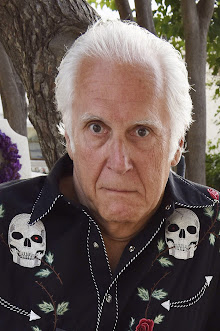An author has some big decisions to make when starting a novel. For example, it can be written in the present tense or in the past tense i.e. the reader can be told what happened or see it happening in “real time”. Both have advantages and disadvantages. Present tense is more immediate. You see what’s happening at this instant so the future remains undetermined. You are in the moment. Past tense is more usual and some readers expect stories to be told that way. Someone telling a story aloud is unlikely to do it in the present tense. The narrator knows the whole story and so tells it in the past tense. It can be easier to develop backstory also.
Then there’s point of view (POV). In writing-speak point of view refers both to the mode of writing the author chooses for the novel, and to the focus on a character whose perspective holds within a particular chapter or section.
An omniscient
POV is when the narrator is all knowing. The author can tell us what’s
happening inside any character’s head at any time, knows where everything is
going. Although it’s hackneyed, the narrator could say, “If only she’d known…”
The problem here is that the reader can feel disconnected from the protagonist,
and the author must be careful not to flip from the inside of one head to
another and then to another, which can be irritating and confusing.
If all the
focus is to be on the protagonist, let her tell the story in first person. The
reader is in her head all the time. That’s great for her character development. She tells us not only what she thinks
but how she thinks. We see all other characters from her perspective, so they
are really just reflections in her mind. It’s a wonderful way of making the
book entirely about her. There is, of course, one big snag especially for a
mystery or a thriller. The reader can only see what she sees and know what she
knows. The reader can’t see the bad guy sneak up behind her with a gun. Not
until she swings around and faces him.
Then there’s third person POV. Now the story is told in third person. It may be third person close, in which case most of the time it will be from the protagonist’s POV but narrated in third person. However, it may be more relaxed. Chapters may be from different character’s POVs. It allows one to see the bad guys plotting, the protagonist thoughts in action, some straight story narration for background, and so on. I think it’s true that most novels are written in this flexible style of third person. It’s the way we write the Kubu books, and it works particularly well for police procedurals because it allows the reader to see things that Kubu does not to add tension and interest in how Kubu discovers them.
When we started writing our stand-alone thriller Dead of Night, we decided on a challenge. We would have a female protagonist (who eventually ended up as a woman of Vietnamese ancestry to make still harder), we would write it in the present tense for the immediacy, and we would use first person POV. What could possibly go wrong?
Well, quite
a lot as it turned out. We struggled with the main character, but that’s
another story. We found present tense hard to manage – maybe because we were so
used to the past tense model. Once we settled on the plot and the character and
felt comfortable with that, we dropped the present tense and reverted to the
past tense that made us more comfortable. But we stuck it out with the first
person POV. We wanted all the focus on Crystal, and we felt that her
perspective throughout helped with tension.
The book
took us much longer than we’d expected, and when we sent it to our editor, it
was with considerable trepidation.
He was not
thrilled. I think he felt that Crystal was still narrating the story rather
than living it. We went through multiple iterations, and at times it felt that
there were now three of us writing the book instead of two of us. In the end,
the editor called for the “nuclear option”. The book would be rewritten in
third person close i.e. it would be almost entirely from Crystals POV, but we
would be telling the story not her. It called for a total rewrite of the book,
but it seemed to work.
I know of many
writers who have successfully written from multiple POVs – even within a single
series. The first Reacher novel was in first person, and then Child switched to
third person. Why was it so hard for us? Stanley has suggested—and I think he’s
right—that first person is very, well, personal. You are inside the protagonist’s
head all the time. Everything happens inside that head. But we are two heads. Although
we think we are both inside the same head, perhaps we have slightly different
perspectives and that slightly blurs the character.
If there’s
a moral to this story, it’s probably that you should write in the way that
feels comfortable to you. Don’t be afraid to change, but don’t assume it’ll be
easy!


















No comments:
Post a Comment